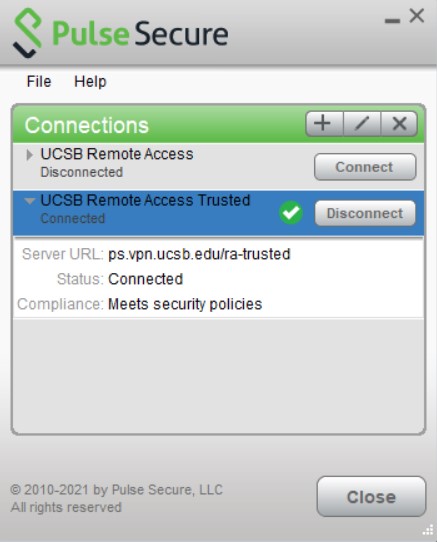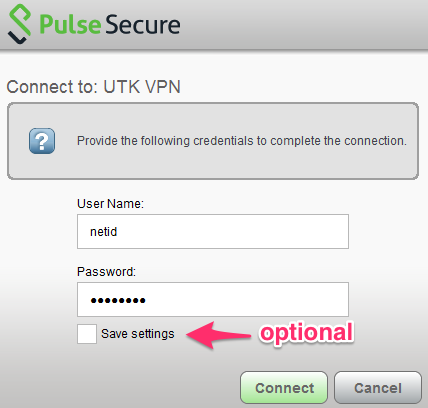

Leave the "Remember my sign-in info" as desired.Name the "Connection name" as desired, for example "COEIT VPN".In the "VPN Provider" dropdown, select "Pulse Secure".If you experience issues finding this panel, open the Windows Settings, select "Network & Internet" on the left sidebar, then select "VPN" in the main window on the right side.If this is not available, search the "Start Menu" for "VPN Settings" Once installed, click "Open" to launch the settings to the following screen.To install the Windows Store version of the Pulse Secure VPN client, either visit the following page, or open the Windows Store and search for "Pulse Secure.".

If you have further issues, please create a ticket at and note that you are experiencing issues with Windows 11 and the Windows Store version of the Pulse Secure client. After utilizing these steps, p lease look for additional future communication regarding Pulse Secure VPN and Windows 11 from the Engineering Technology Services in case of updates or changes. If you are experiencing issues with Pulse Secure VPN connections on personal devices running Windows 11, a temporary workaround exists using the Windows Store version of the Pulse Secure VPN client. If you are still experiencing issues, please create a ticket at. The current release of the client we are supporting is listed at the top of the College of Engineering Ivanti (formerly Pulse) Secure VPN page. To check the version you are running, open the Pulse Secure client and select "Help" > "About" at the top of the client window. Please use the most recent Pulse Secure client to ensure the best supported experience on all platforms. The contents of this page are now out of date as the 9.1.R13 and later versions of the Pulse Secure client addresses the issues on Windows 11.


 0 kommentar(er)
0 kommentar(er)
